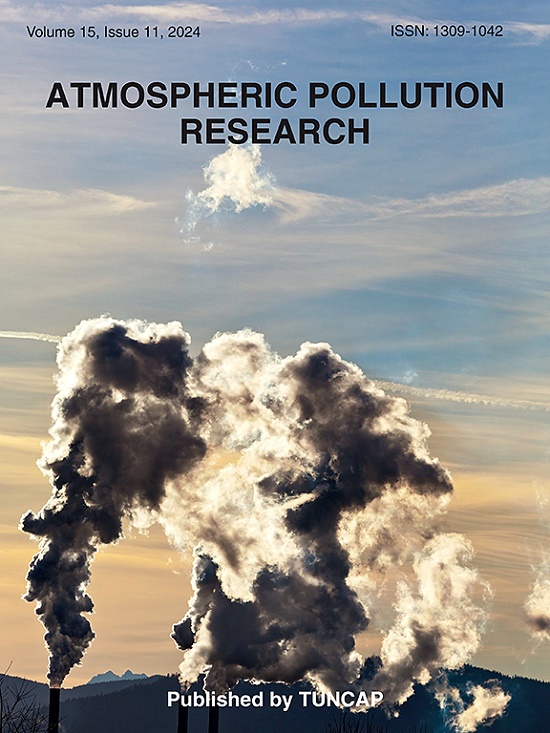The application of a land-use regression model to investigate the effect of urban greenbelts on ambient PM10 and PM2.5 mitigation during seasons of light and heavy pollution
IF 3.5
3区 环境科学与生态学
Q2 ENVIRONMENTAL SCIENCES
引用次数: 0
Abstract
Greenbelts located close to traffic pollution sources can significantly attenuate air pollution by intercepting and assimilating the pollutants on a lasting basis. However, the impact of greenbelts can be affected by neighbouring land use. This paper investigated the effects of urban greenbelts on the mitigation of ambient PM10 and PM2.5 in Wuhan, China using a land-use regression (LUR) approach. Traffic-related pollution emissions had a crucial impact on PM10 and PM2.5 levels. The effect of greenbelts on PM10 and PM2.5 mitigation can be decreased by adjacent traffic pollution sources, but enhanced by increasing the width of the greenbelt. In addition, meteorological factors had a variable impact on PM levels during the seasons of light and heavy pollution. According to the LUR model, the combined effects of the greenbelt, traffic PM sources and meteorological factors were characterized by the threshold impact of greenbelt width on PM mitigation, with a width of 40 m having a significant and positive effect on PM levels. In addition, these effects varied with thresholds in different pollution conditions, and were less evident in the heavily polluted season. The combined effect of urban greenbelt on PM reduction should be explored in real-life conditions, which will have important practical significance for urban planning and construction.

应用土地利用回归模型研究轻、重污染季节城市绿地对环境PM10和PM2.5的缓解效果
靠近交通污染源的绿地能够持久地截留和吸收污染物,从而显著地减弱空气污染。然而,绿化带的影响可能会受到邻近土地使用的影响。采用土地利用回归(LUR)方法研究了武汉市城市绿地对环境PM10和PM2.5的缓解效果。与交通相关的污染排放对PM10和PM2.5水平有重要影响。绿化对PM10和PM2.5的抑制作用会因邻近交通污染源而减弱,但会因绿化宽度的增加而增强。此外,在轻污染季节和重污染季节,气象因子对PM水平有不同的影响。根据LUR模型,绿地、交通PM源和气象因子的综合效应表现为绿地宽度对PM缓解的阈值影响,其中绿地宽度为40 m对PM水平有显著的正向影响。此外,这些影响在不同污染条件下随阈值而变化,在重污染季节不太明显。城市绿地对PM减排的联合效应应在现实条件下进行探索,这对城市规划建设具有重要的现实意义。
本文章由计算机程序翻译,如有差异,请以英文原文为准。
求助全文
约1分钟内获得全文
求助全文
来源期刊

Atmospheric Pollution Research
ENVIRONMENTAL SCIENCES-
CiteScore
8.30
自引率
6.70%
发文量
256
审稿时长
36 days
期刊介绍:
Atmospheric Pollution Research (APR) is an international journal designed for the publication of articles on air pollution. Papers should present novel experimental results, theory and modeling of air pollution on local, regional, or global scales. Areas covered are research on inorganic, organic, and persistent organic air pollutants, air quality monitoring, air quality management, atmospheric dispersion and transport, air-surface (soil, water, and vegetation) exchange of pollutants, dry and wet deposition, indoor air quality, exposure assessment, health effects, satellite measurements, natural emissions, atmospheric chemistry, greenhouse gases, and effects on climate change.
 求助内容:
求助内容: 应助结果提醒方式:
应助结果提醒方式:


